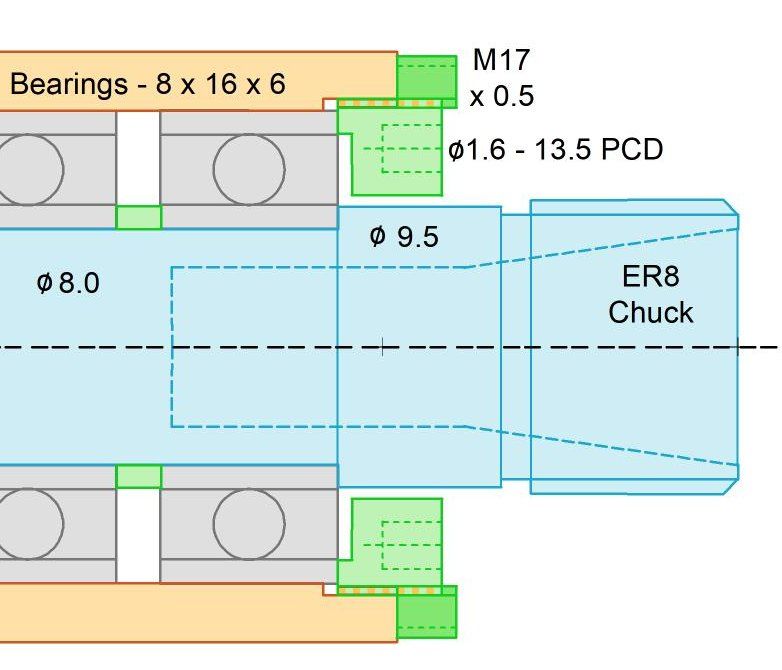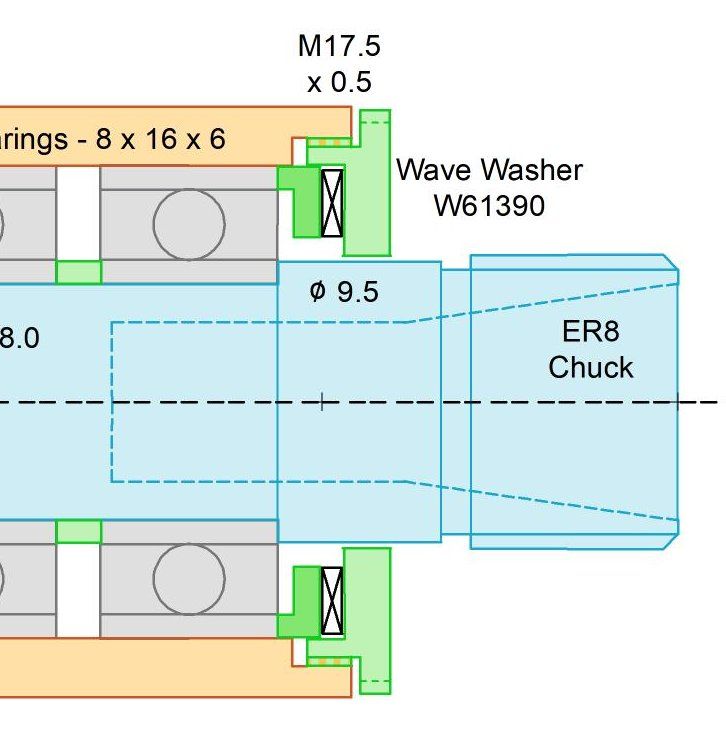I think you may be over-emphasising the ease of assembly. The tail bearing will look after itself as the assembly is pushed together. You're right, and others have pointed out, that a threaded-on pulley will self-tighten, and so doesn't really need a locknut. It's analagous to a screwed-on lathe chuck. But, should you wish to run the spindle in reverse, a locknut becomes necessary.
So, to simplify further, delete the green pulley hub, and thread the pulley directly onto the shaft. As I suggested before (or meant to, it was getting late), the pulley should, in addition to a threaded bore section, also have a plain bore, for best location, and I think this should be adjacent to the bearing. Thus, on your latest drawing, the 7 mm dia becomes plain, and the 6 mm diameter is threaded. The pulley itself is positioned as far to the right as possible, (over the plain bore section) to reduce the effects of belt tension. It will be easy enough to swap pulleys, and it won't disturb the shaft.
I think the spacer tube could be simplified, with plain, not stepped ends. Its right hand end can remain 7.1 mm ID, if the spindle's 7.1 mm OD extends just a tad under the inner bearing's inner track. I'd think that its left end could also remain 9.5 mm OD. It doesn't matter if it's a larger diameter than the bearing's inner track's OD.
One complication you might consider is a lightly pressed-on flange, on the 9.5 mm Diameter of the shaft, acting as a flinger or muck shield.
It's looking pretty well done – time to cut metal soon!
Steve Crow.








